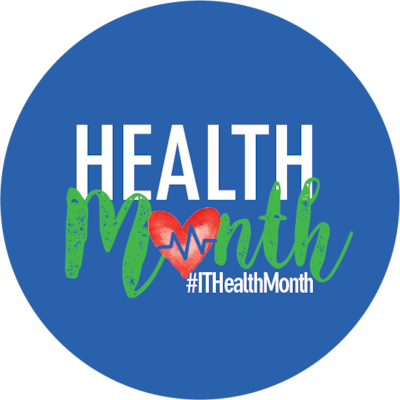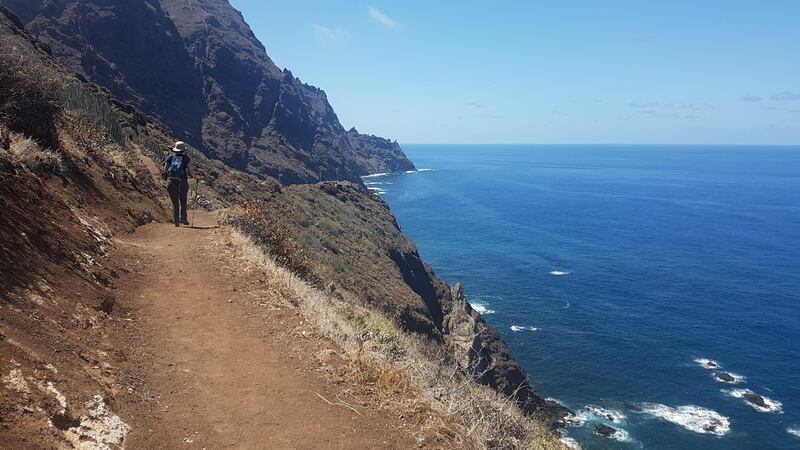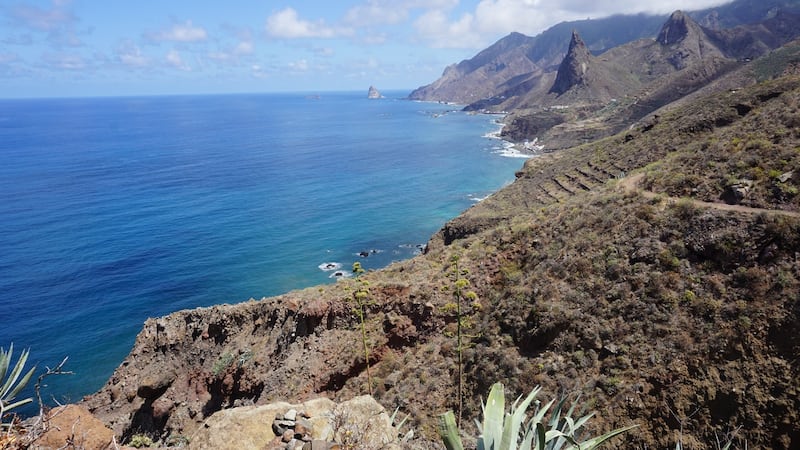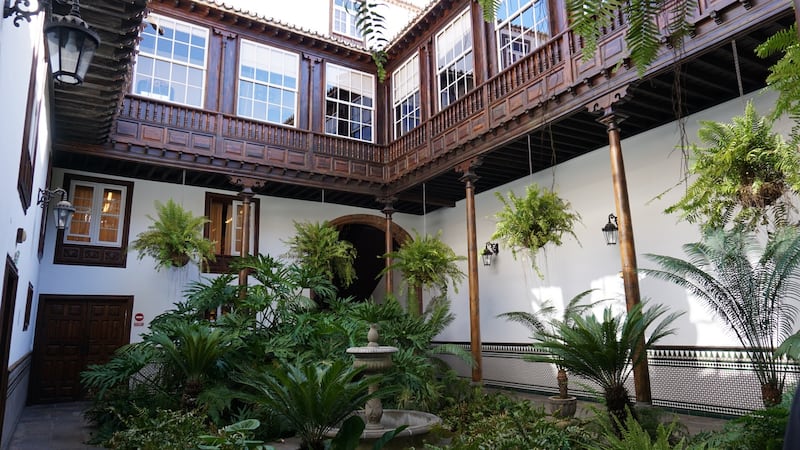The shadows are lengthening, the heat is dissipating, and we should have been out of this dry and dusty ravine long before now. But I can barely put one foot in front of the other. I’m trying to climb a cliff face, after eight hours of walking, most of in the hot sun. I feel like lying down and waiting until morning.

Hiking in Tenerife had sounded pretty idyllic, and the day started that way, high on a ridge in the northeast corner of the island. Jagged peaks are cloaked in vivid green, their flanks trailing wisps of cloud. Ferns drip onto the forest floor and curtains of moss cling to laurel and lime trees, in what is one of the oldest forests in Europe. This is the prehistoric, lost world of Anaga, the Tertiary-era kingdom of the clouds. It's a cool and humid contrast to the rest of Tenerife, and a retreat from the sun, sea and sand resorts to the south.
Walking steadily downhill for several hours on ancient paths, which once connected tiny hamlets, we emerge from the forest into a drier, hotter world, catching occasional glimpses of the turquoise sea below. We stop for a coffee in the tiny village of Taganana, its white sugar-cube houses perched above the Atlantic, a subtropical paradise of palm trees, sugar cane and purple bougainvillea.

From here a path follows the coast, passing abandoned stone houses and the odd tiny farm still tended on the weekends by people living elsewhere. Wild thyme perfumes the breeze and ancient gnarled vines still grow in terraces tumbling towards the sea.
The landscape is deeply folded and eroded: this part of Tenerife was the first to emerge from the ocean between seven and nine million years ago. The trail twists and turns, revealing ever more stunning views, until we reach the mouth of the Afur ravine, where Atlantic rollers batter a beach of black sand and rock. And this is where it starts, the long tough haul back up the ravine to reach the height of the ridge and the road. There is no alternative but up.
This is the wilder, more savage side of Tenerife
In contrast to the forest, very little grows here. Cardones, endemic cactus-like plants, with outstretched limbs, are candelabras reaching for the sky, surviving on very little water. This is the wilder, more savage side of Tenerife. Trekking poles lent by our guide help for a while, as to do the encouraging words of my pal Maria who goes ahead in search of water, but by the end I am scrambling with my bare hands to reach the top, to find the others downing a beer in an old bar that still has a Franco poster on the wall.

A wine tasting due to take place that evening is postponed until the following day to allow us to recover. We gather in the oldest part of the La Laguna Gran Hotel, a refurbished 16th century townhouse in the former capital San Cristobal la Laguna.
The sommelier explains that in the 16th century noble families across Europe would send boats to pick up wines from the Canaries, including Malvasia, or Malmsey, reputedly Shakespeare’s favourite. It perfumed the blood, he said. Malvasia aromatica grapes produce Viñátigo dulce, a perfect partner to some of the island’s best cheese. A méthode champenoise Bermejo from Lanzarote, is a revelation, and a suitable toast to our hiking endeavours.
The wine trade provided much of the wealth of San Cristobal La Laguna. Stern high walled convents, merchant’s mansions hiding tranquil patios and gaudily baroque churches are a reminder that Tenerife was once an important node of global commerce, the last stop before the Americas during centuries of Spanish colonial rule. Laid out in a grid pattern, it was the model for the cities of Havana in Cuba, Cartagena in Colombia and many others. These days, La Laguna is an easy-going university city and a comfortable base to recover between hikes.

Tenerife has a growing network of trails, and some of the most popular are within the Parque Natural el Teide. There are 321 volcanoes on Tenerife, which rose out of the seabed after many eruptions, but the grand-daddy of them all is El Teide, visible from almost any point on the island, the highest mountain in Spain and the third highest volcano in the world. Buttresses and other rock formations on the way to the summit suggest the Wild West, and the volcano's slopes are covered with hundreds of thousands of tonnes of lava, folded and crusted into crazy shapes as it flowed down the mountain.
As night falls, blackness descends, but as it does, pinpricks of light emerge, and soon the sky is a roof of stars
Climbing El Teide is a two-day process, with an overnight in a refuge and a dawn ascent. There is also a cable car to the top. Hundreds of thousands of tourists visit El Teide on day trips every year, but staying overnight is a particularly special experience.
The Parador de las Cañadas del Teide is 2,150 m above sea level and one of the best places in the world to go stargazing. As the sun begins to set, the dry dusty landscape turns liquid gold and every rock is burnished copper. As night falls, blackness descends, but as it does, pinpricks of light emerge, and soon the sky is a roof of stars.

Our guide Juan Vicente has his own superpowers, brandishing a pointer whose laser beam can stretch 6km into the night sky. He points towards Vega, the fifth brightest star in the night sky, part of the constellation of Lyra. We find the tail of Ursa Minor and marvel at the Milky Way. Juan is entertaining and informative, but I slip away, seeking silence and my own quiet encounter with the night.
For most of our time on earth, humans have looked to the heavens in wonder. But living in cities we’ve lost that connection to the cosmos. Lying back staring at the sky, I feel small and insignificant, wondering what else is out there, thousands of light years away, but also part of something large and extraordinary, and utterly at peace.
Margaret Ward was a guest of Canariaways, Paradores and Aer Lingus
HOW TO ……
Flights: Aer Lingus operates up to seven flights a week from Dublin to Tenerife and up to two flights a week from Cork during their winter schedule. Fares start from €66.99 one-way including taxes and charges. aerlingus.com
CanariaWays.com offers self-guided walking and hiking holidays in the Canary Islands. Packages from €570 per person sharing. Accommodation includes boutique properties and paradores. Guided tours are also available for groups.
Stargazing: Juan Vicente, Teide Astro. info@teideastro.com
Parador at El Teide: parador.es/en/paradores/parador-de-las-canadas-del-teide








